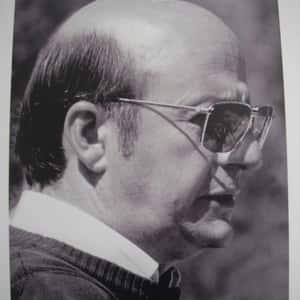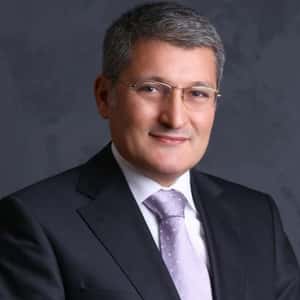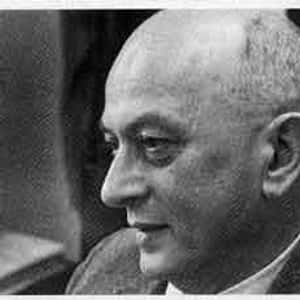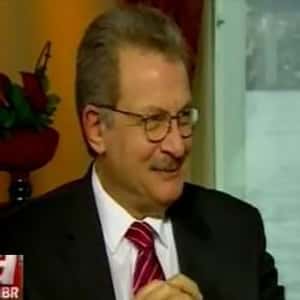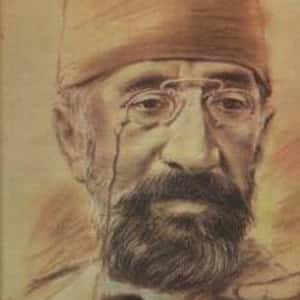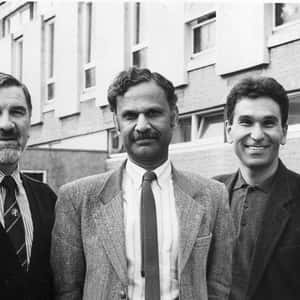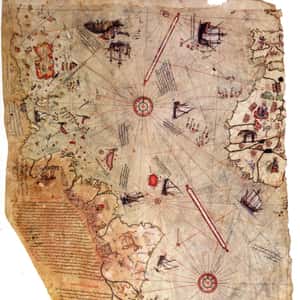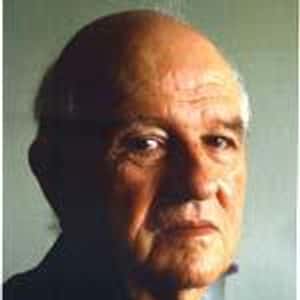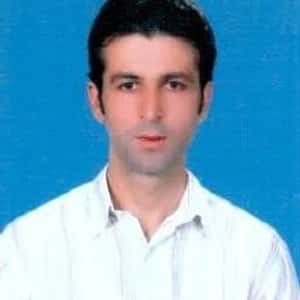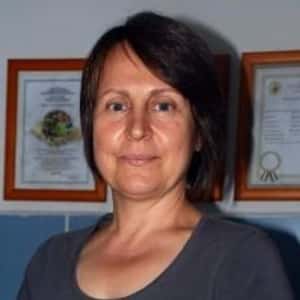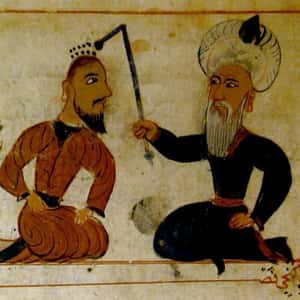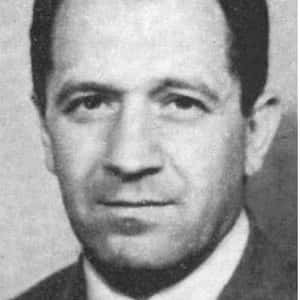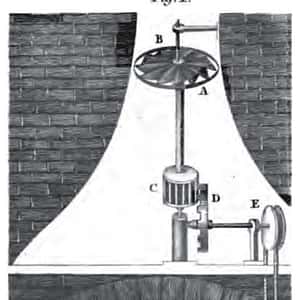- Dec. at 61 (1929-1990)Kenan Tevfik Erim (13 February 1929 in İstanbul – 3 November 1990 in Ankara) was a Turkish archaeologist who excavated from 1961 until his death at the site of Aphrodisias in Turkey.
- Kenan Eyup Sahin (generally known simply as Dr. Kenan Sahin) is a Turkish-born American Scientist and Entrepreneur. He is the Founder/ President and the Chief Technology Officer of TIAX LLC in Lexington, Massachusetts. He is also the Founder/CEO of CAMX Power which formerly was a division of TIAX LLC and in May 2014 became a separate company.
- Dec. at 84 (1480-1564)Nasuh bin Karagöz bin Abdullah el-Visokavi el-Bosnavî, or Nasuh el-Matrakči ibn Karađoz ibn Abdullah el-Visokavi el-Bosnevi, commonly known as Matrakçı Nasuh (Turkish pronunciation: [matɾakˈtʃɯ naˈsuh]; Bosnian: Matrakčija Nasuh Visočak) for his competence in the game of Matrak, invented by himself, (also known as Nasuh el-Silâhî, Nasuh the Swordsman, because of his talent with weapons; 1480 – c. 1564) was a 16th-century Bosniak statesman of the Ottoman Empire, polymath, mathematician, teacher, historian, geographer, cartographer, swordmaster, navigator, inventor, painter, farmer, and miniaturist. He was brought to Istanbul after being recruited by the Ottoman scouts in Rumelia, educated, served several Ottoman sultans, and became a teacher at Enderun School.
- Dec. at 82 (1906-1988)Muzafer Sherif (born Muzaffer Şerif Başoğlu; July 29, 1906 – October 16, 1988) was a Turkish-American social psychologist. He helped develop social judgment theory and realistic conflict theory. Sherif was a founder of modern social psychology who developed several unique and powerful techniques for understanding social processes, particularly social norms and social conflict. Many of his original contributions to social psychology have been absorbed into the field so fully that his role in the development and discovery has disappeared. Other reformulations of social psychology have taken his contributions for granted, and re-presented his ideas as new.
Nihat Berker
Age: 74Ahmet Nihat Berker (born 20 September 1949 in Istanbul), is a Turkish scientist, theoretical chemist, physicist and emeritus professor of physics at MIT. Currently, he is the acting Dean of Engineering and Natural Sciences in Kadir Has University, Turkey. He is the son of a notable scientist and engineer Ratip Berker, who was deceased on 17 October 1997. His wife, Bedia Erim Berker is a professor of chemistry at Istanbul Technical University, and one of his sons, Selim Berker is a professor of epistemology in the department of philosophy at Harvard University and his other son, Ratip Emin Berker is currently a sophomore at Harvard.- Age: 89Oktay Sinanoğlu (February 25, 1935 – April 19, 2015) was an internationally renowned Turkish physical chemist and molecular biophysicist.
- Dec. at 58 (1946-2004)Ordal Demokan (January 13, 1946 – October 29, 2004) was a Turkish physicist.
- Dec. at 67 (1842-1910)Osman Hamdi Bey (30 December 1842 – 24 February 1910) was an Ottoman administrator, intellectual, art expert and also a prominent and pioneering painter. He was also an accomplished archaeologist, and is regarded as the pioneer of the museum curator's profession in Turkey. He was the founder of Istanbul Archaeology Museums and of Istanbul Academy of Fine Arts (Sanayi-i Nefise Mektebi in Turkish), known today as the Mimar Sinan University of Fine Arts.
- Ozalp Babaoğlu, son of former Turkish foreign officer Nazif Babaoğlu and his wife Şükran Babaoğlu, born in Ankara, Turkey, is a Turkish computer scientist. He is currently Professor of Computer Science at the University of Bologna, Italy. He received a Ph.D. in 1981 from the University of California at Berkeley where he was a principal designer of BSD Unix. He is the recipient of 1982 Sakrison Memorial Award, 1989 UNIX International Recognition Award and 1993 USENIX Association Lifetime Achievement Award for his contributions to the UNIX system community and to Open Industry Standards. Before moving to Bologna in 1988, Babaoğlu was an Associate Professor in the Department of Computer Science at Cornell University. He is active in several European research projects in distributed computing and complex adaptive systems. Babaoğlu is an ACM Fellow, a resident fellow of the Institute of Advanced Studies at the University of Bologna and serves on the editorial boards for ACM Transactions on Computer Systems, ACM Transactions on Autonomous and Adaptive Systems and Springer-Verlag Distributed Computing.Babaoğlu is married with two children, one son and one daughter. He is an avid cyclist.
- Ahmed Muhiddin Piri (1465/70 – 1553), better known as Piri Reis (Turkish: Pîrî Reis or Hacı Ahmet Muhittin Pîrî Bey), was an Ottoman admiral, navigator, geographer and cartographer. He is primarily known today for his maps and charts collected in his Kitab-ı Bahriye (Book of Navigation), a book that contains detailed information on navigation, as well as very accurate charts (for their time) describing the important ports and cities of the Mediterranean Sea. He gained fame as a cartographer when a small part of his first world map (prepared in 1513) was discovered in 1929 at the Topkapı Palace in Istanbul. His world map is the oldest known Turkish atlas showing the New World, and one of the oldest maps of America still in existence anywhere (the oldest known map of America that is still in existence is the map drawn by Juan de la Cosa in 1500). Piri Reis' map is centered on the Sahara at the latitude of the Tropic of Cancer.In 1528, Piri Reis drew a second world map, of which a small fragment (showing Greenland and North America from Labrador and Newfoundland in the north to Florida, Cuba, Hispaniola, Jamaica and parts of Central America in the south) still survives. According to his imprinting text, he had drawn his maps using about 20 foreign charts and mappae mundi (Arab, Spanish, Portuguese, Chinese, Indian and Greek) including one by Christopher Columbus. He was executed in 1553 in Cairo, having been found guilty of raising the siege of Hormuz Island and abandoning the fleet, even though his reason was the lack of maintenance of his ships.
- The Ergun equation, derived by the Turkish chemical engineer Sabri Ergun in 1952, expresses the friction factor in a packed column as a function of the modified Reynolds number.
Sedat Alp
Dec. at 93 (1913-2006)Professor Sedat Alp (January 1, 1913 in Veroia – October 9, 2006 in Ankara) was the first archaeologist in Turkey with a specialization in Hittitology, and was among the foremost names in the field. Sedat Alp was born in Karaferye, present-day Veroia in Greece. His family moved to Turkey as a result of the exchange of populations between Greece and Turkey in 1923. In 1932, he earned a state scholarship opened under the personal auspices of Mustafa Kemal Atatürk and was sent to the University of Leipzig (he later transferred to the University of Berlin) to study prehistory, history, Hittitology, Sumerology, Assyriology, ancient Anatolian languages and cultures, as well as archaeology in general. Having earned his doctorate in the University of Berlin, he returned to Turkey in 1940 and started to teach Hittitology within Ankara University's Faculty of Languages, History and Geography (DTCF). He became the dean of the faculty in 1959, continuing at the same time his work in the field. One of his most notable discoveries was the mound of Maşat Höyük, which in the quantities of Hittite cuneiform tablets was second only to the Hittite capital at Hattusas modern Boğazkale, near Çorum. Outside Turkey, Prof. Alp was awarded the Italian Commandatore of the Order of Merit of the Republic in 1957, the Order of Merit of the Presidency of the Federal Republic of Germany in 1972, the French College of France medal in 1980, the German Great Cross of Merit with star and the Grande Ufficiale Order of Merit of the Italian Presidency of the Republic in 1991. From 1997 he held an honorary doctorate at the University of Würzburg, and from the following year was made a member of the British Academy and, for the contributions he made to the promotion of knowledge on the region's historical treasures, an honorary citizen of the city of Çorum in north-central Anatolia, where the Hittite capital was situated. He died in Ankara.- Age: 75Selman Akbulut (born 1949) is a Turkish mathematician and a Professor at Michigan State University. His research is in topology.
- Dec. at 62 (1943-2005)Semra Dündar (April 5, 1943 – April 7, 2005) was a Turkish hematologist. Dündar was born in Lüleburgaz in 1943. She graduated from the Ankara University School of Medicine and spent nearly all of her career working at the Hacettepe University Hospital and School of Medicine in Ankara, Turkey, where she rose to become Professor of Hematology and head of the Hematology Department. She worked on many hematologic diseases, including leukemias, anemias, and Behçet's syndrome. She was also a visiting physician in Bristol, England, between 1975 and 1977. She had over 125 publications on hematologic diseases in international medical journals, as well as being coauthor of many medical textbooks. She died in Ankara on April 7, 2005, of complications from surgery.
Şerafeddin Sabuncuoğlu
Dec. at 83 (1385-1468)Şerafeddin Sabuncuoğlu (1385–1468) (Ottoman Turkish: شرف الدّین صابونجی اوغلی) was a medieval Ottoman surgeon and physician. Şerafeddin Sabuncuoğlu started his medical interests at the age of 17. He would continue with this medical interest and practice in Amasya Dar-es Sifa Hospital until he died. Şerafeddin Sabuncuoğlu was the director of the Amasya Dar-es Sifa Hospital for almost 14 years.Sıraç Dilber
Sıraç Dilber is a Turkish scientist. NK cells are needed to fight against bacteria and cancerous tumours; but even when they are present, they cannot fight the disease effectively. Dilber and his team managed to increase the number of cells by 200.Tahsin Özgüç
Dec. at 89 (1916-2005)Tahsin Özgüç (1916–2005) was an eminent Turkish field archaeologist. The careers of Tahsin Özgüç and his wife, Nimet Özgüç, began after World War II and lasted for nearly 60 years. He was said to be the doyen of Anatolian archaeology.- Dec. at 59 (1526-1585)Taqi al-Din Muhammad ibn Ma'ruf ash-Shami al-Asadi (Arabic: تقي الدين محمد بن معروف الشامي, Ottoman Turkish: تقي الدين محمد بن معروف الشامي السعدي) (1526–1585) was an Ottoman polymath active in Cairo and Istanbul. He was the author of more than ninety books on a wide variety of subjects, including astronomy, clocks, engineering, mathematics, mechanics, optics and natural philosophy. In 1574 the Ottoman Sultan Murad III invited Taqī ad-Dīn to build the Constantinople observatory. Using his exceptional knowledge in the mechanical arts, Taqī ad-Dīn constructed instruments like huge armillary and mechanical clocks that he used in his observations of the Great Comet of 1577. He also used European celestial and terrestrial globes that were delivered to Istanbul in gift-exchange. The major work that resulted from his work in the observatory is titled "The tree of ultimate knowledge [in the end of time or the world] in the Kingdom of the Revolving Spheres: The astronomical tables of the King of Kings [Murād III]" (Sidrat al-muntah al-afkar fi malkūt al-falak al-dawār– al-zij al-Shāhinshāhi). The work was prepared according to the results of the observations carried out in Egypt and Istanbul in order to correct and complete Ulugh Beg’s Zij as-Sultani. The first 40 pages of the work deal with calculations, followed by discussions of astronomical clocks, heavenly circles, and information about three eclipses which he observed at Cairo and Istanbul. For corroborating data of other observations of eclipses in other locales like Daud ar-Riyyadi (David the Mathematician), David Ben-Shushan of Salonika. As a polymath, Taqī al-Dīn wrote numerous books on astronomy, mathematics, mechanics, and theology. His method of finding coordinates of stars were reportedly so precise that he got better measurements than his contemporaries, Tycho Brahe and Nicolas Copernicus. Brahe is also thought to have been aware of al-Dīn's work. Taqī Ad-Dīn also described a steam turbine with the practical application of rotating a spit in 1551. He worked on and created astronomical clocks for his observatory. Taqī Ad-Dīn also wrote a book on optics, in which he determined the light emitted from objects, proved the Law of Reflection observationally, and worked on refraction.
- Age: 74Tekin Dereli (November 30, 1949) is a Turkish theoretical physicist.
- Ahmet Turgay Uzer is a Turkish born American theoretical physicist. Emeritus Regents' Professor at Georgia Institute of Technology following Joseph Ford (physicist). He has contributed in the field of atomic and molecular physics, nonlinear dynamics and chaos significantly. His research on interplay between quantum dynamics and classical mechanics, in the context of chaos is considered to be novel in molecular and theoretical physics and chemistry.
Üstün Aydıngöz
Age: 59
Filed under:
Fact-checked by:Jules Burke


